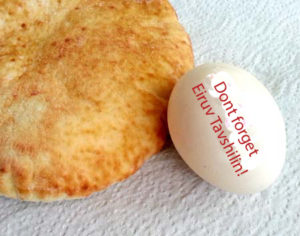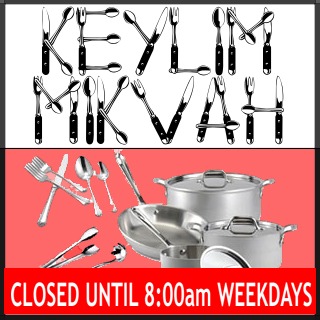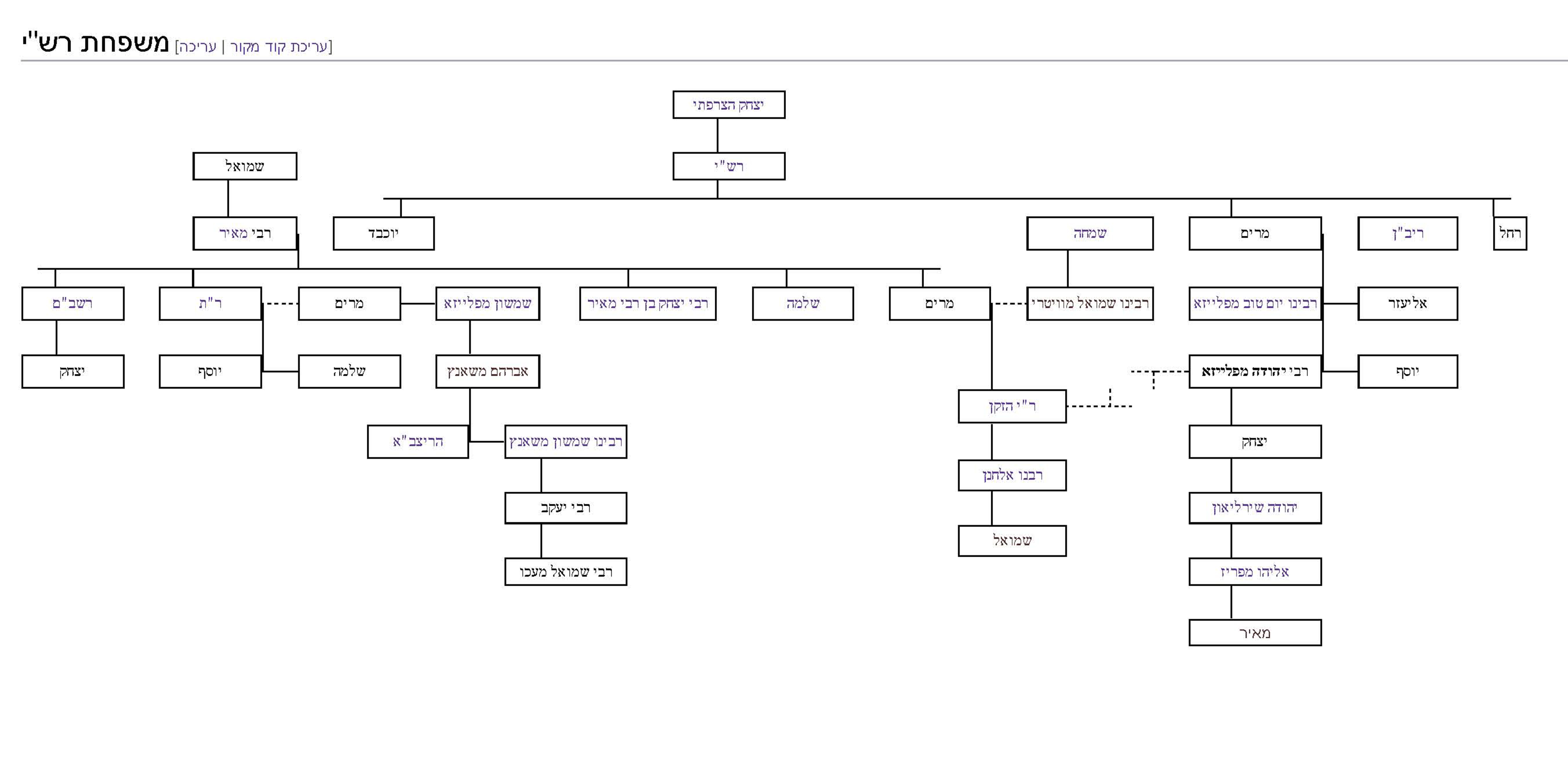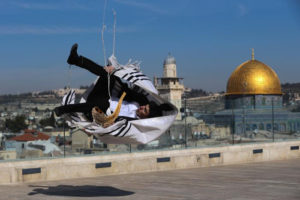Beitza 17b – 18a.
1- Our Gemara concludes the halachos of Eiruv Tavshilin.
Bottom line: Is a cooked item (Tavshil) sufficient, or does one need to have a baked item as well?

We learned the Tosfos discussing the different opinions regarding this topic.
Rabbeinu Tam writes that even Beis Hillel agrees that setting aside a cooked food permits one only to cook, fry, and boil (that is, to heat a food through the medium of a liquid – bishul) on Yom Tov for Shabbos. It does not permit one to bake (with dry heat) on Yom Tov for Shabbos. If one wants to bake on Yom Tov for Shabbos, he must set aside a baked item before Yom Tov.
His nephew Rabeinu Yitzchok (The “RI”) disagrees and maintains that a single cooked dish certainly suffices to permit both cooking and baking. He adds that the simple reading of the Mishna – “tavshilin” denotes that a cooked item (tavshil) is sufficient to do all work pertaining to food.
He nevertheless concludes that “my heart does not allow me to rule against my uncle and one needs to make an Eiruv Tavshilin with two items (cooked and baked) and that is the common Minhog”.
The Alter Rebbe rules like Rabeinu Yitzchok. See here #3 and further on #24.
See here Rashi’s family.
2- The next Mishna discusses the topic of using a Mikva on Shabbos and Yom Tov. The opinion of both Beis Shamai and Beis Hillel is that on Shabbos one may not immerse keilim in the mikvah to purify them.
They do argue about a person using the mikvah on Shabbos and Yom Tov.

We spoke about the lone opinion of Tosfos in Chulln that a person (not only a Kohen) has the obligation not to become tamei. Most opinions argue but all agree that before Yom Tov approaches, Min Hatorah one needs to make sure that he is tahor since he can enter the Beis Hamikdosh.
3- We mentioned the opinion of the Tzlach that it seems from the Rambam that even if one lives overseas (when there is a functional Beis Hamikdosh) he needs to become tahor!

4- The first reason mentioned in the Gemara for the prohibition against tovling keilim is the famed ‘gezeira D’Rabbah’ גזירה דרבה שמא יעבירנו ד״א ברה״ר – that one may carry the keli 4 amos in a reshus ha’rabim.
5- We related the story of Reb Leible Eiger – grandson of Rabbi Akiva Eiger- as it relates to this Gemara.
See here and an interesting story here.
Found online one version of the story.
When Horav Shlomo Eigar’s son, Rav Leibele, left for the chassidic court of Kotzk and its Rebbe, his father was about to place an injunction of Kibbud av – binding him by the mitzvah of honoring one’s father – against his going. Rav Shlomo had strongly negative feelings against the Chassidus movement. When word of this parental injunction reached the Kotzker Rebbe, zl, the Rebbe remarked, “What a ‘partner’ does is done. Hashem is also a partner, and He facilitated R’Leibele’s arrival in Kotzk. The “other partner” cannot alter this.”
Rav Shlomo was despondent over his son’s decision, considering it a tragedy of epic proportion. He decided to travel to his father, Horav Akiva Eiger, who was the gadol ha’dor, pre-eminent leader of the generation, and solicit his advice. He described the terrible “tragedy” to his father, explaining that his son must have snapped. The Chassidic sect was not religious, and the chassidim were guilty of spreading a false culture, antithetical to traditional Judaism.

Rav Akiva Eiger was disturbed by his son’s blanket statements. Rav Shlomo was an outstanding Torah scholar and pious Jew. He was troubled by such statements emanating from him. He told his son that it is prohibited to accept lashon hora, slander, about an individual Jew, and certainly about a group of Jews. Since he saw how much the entire debacle bothered his son, however, he would travel to Poland to speak with his grandson. He would then determine whether there was a problem. Travel was not easy, and Rav Akiva Eiger was no longer a young man. Such a trip would take its toll on him, but he felt that he had to determine for himself the veracity of his son’s statements. He had to see for himself whether his grandson had gone off the derech, left the Torah way of life.
Rav Leibele was shocked to greet his distinguished guest. What could his revered grandfather want that he would put his health in danger by making such a trip? Rav Akiva Eiger embraced his grandson, kissed him and said, “When I meet one of my descendants, my custom is first to speak with him in learning. Only afterwards do we make time for pleasantries. He began, “The halachah is that one does not blow Shofar on Shabbos, because of Gezeirah d’Rabbah, the decree of Rabbah, who feared that one might forget and carry the Shofar four cubits in the reshus ha’rabim, public domain. A similar idea applies to Lulav. What troubles me is the following: In their commentary to the Talmud Shabbos 5b, Tosfos cite a question quoted in the Yerushalmi. According to Ben Azzai who opines that mehaleich k’omed dami, “One who is in the process of walking, who takes, say, two steps, is considered by Ben Azzai to have started and stopped a few times. Each time he places his foot down, he is considered to have placed his body down and come to a halt; and each time he has lifted his foot, he is considered to have lifted his body. According to this, how can Ben Azzai hold a person liable for transporting four cubits in a public domain on Shabbos? Each stride is considered a separate akirah and hanachah, lifting and placing, which is the primary criteria for liability for carrying on Shabbos. One must lift the object in one domain and place it in another. Ben Azzai separates each step, so there never occurs an akirah followed by a hanachah four cubits later. The Yerushalmi answers that, according to Ben Azzai, it must occur through the medium of jumping. One hops four amos in one stride.”
Rav Akiva Eiger looked at his grandson and asked, “We know that our sages do not issue a gezeirah, decree, in the event that the possibility of a prohibited occurrence is lo shechiach, unusual. Why would they prohibit blowing the Shofar on Shabbos or shaking the Lulav on Shabbos, because someone might carry it four cubits, when according to Ben Azzai this is only possible by jumping? Since the prohibition can only be realized in an atypical manner, Chazal will not prohibit it.”
Rav Leibele listened respectfully to the question, but was very passionate in his response. “Zaide, we are talking about Tekias Shofar, whose sound pierces the Heavens and creates a stir in the Heavenly spheres. It frustrates Satan, as it mixes him up. Lulav is not much different. How one toils to find a perfect Esrog, so that he can carry out the mitzvah of taking a beautiful fruit to serve Hashem! When a person seeks to understand the halachos concerning this mitzvah, he will do anything to locate a Torah scholar from whom he can learn. Is there a question regarding jumping? Who would not ‘jump’ to perform any of these mitzvos? I would not consider this an unusual act. After all, it is for a mitzvah!”
Rav Akiva Eiger stared deeply into the eyes of his grandson and replied, “I have another explanation, but – from your reply – I see that the approach taken by the chassidim to mitzvah performance is quite in sync with the Torah. They seek to add life, passion, feeling, emotion and joy to mitzvah performance. I will tell your father that he will have much nachas from you!”



